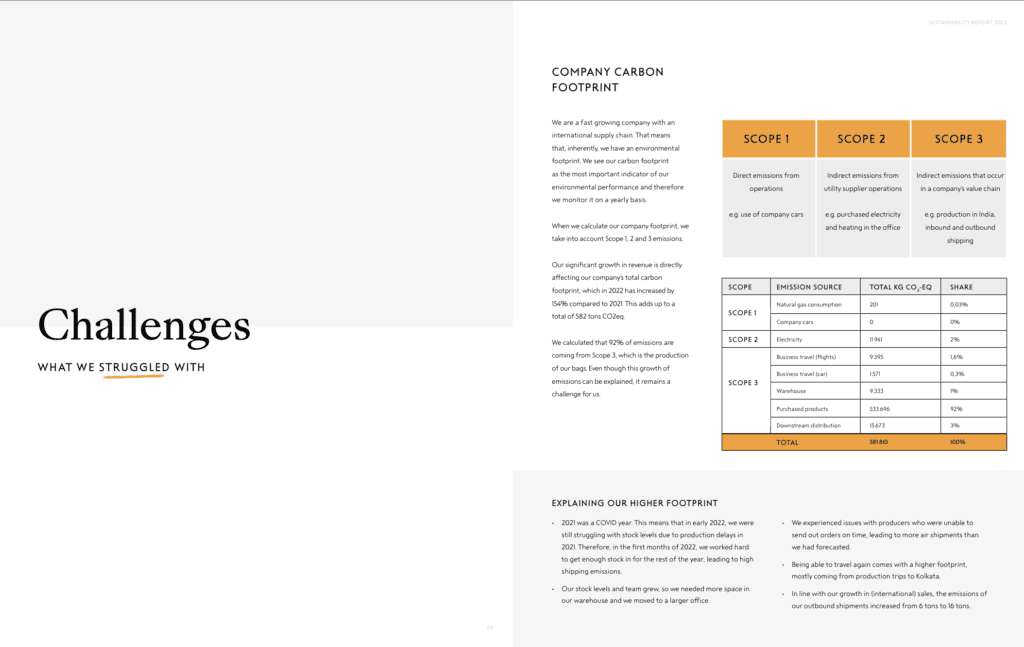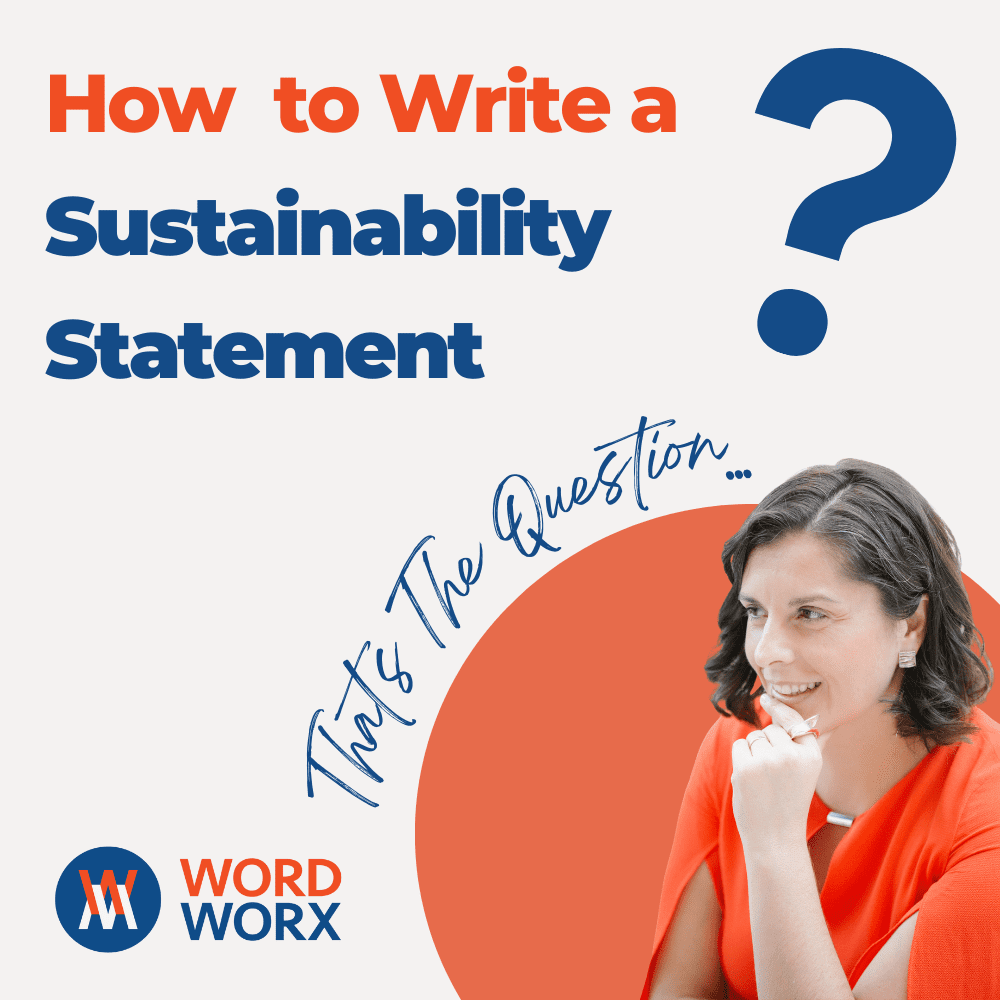If you’re embarking on communicating your company’s sustainability efforts, it’s important to establish a statement that sets the tone for all communication and messaging on sustainability.
However, before we even consider how to write a sustainability statement, we need to understand what such a statement is and the purpose it serves.
What is a Sustainability Statement?
A sustainability statement is a short and sweet message that encapsulates your company’s thinking regarding sustainability. It expresses the company’s commitment to operating sustainably and through sustainable practices. Moreover, it also outlines organisational goals on sustainability as well as actions that highlight how the company aims to achieve such goals through environmental, social, and economic aspects.
Why is a Sustainability Statement Useful?
A sustainability statement is particularly useful for the following reasons:
- It reinforces a strong stance (and coherent messaging!) regarding the company’s position when it comes to sustainability.
- It creates transparency on the topic of sustainability;
- It highlights the company’s efforts on the topic;
- It can create a sense of trust amongst the company’s diverse audiences and stakeholder groups;
- It can help the company establish itself as a leader in the industry when it comes to sustainability.
Where Should It Be Published?
If you’re familiar with PR, a sustainability statement acts like a boilerplate. It is a standardised piece of text that your company can use in various communication collaterals and channels, such as:
- On the company website and dedicated sustainability landing page;
- On the company’s social media platforms (sentences can be used as part of updates or messaging);
- In marketing and communication collaterals such as flyers, handouts, banners etc. (depending on the purpose and if communication on the topic of sustainability is the focus);
- In press releases (on topics of sustainability) featuring as a boilerplate or standard text at the end of the release;
- In the company’s annual Sustainability Report.
How to Structure Your Sustainability Statement
When learning how to write a sustainability statement, it’s imperative to know that every statement differs according to each company’s differing needs and wishes.
When writing a sustainability statement, try not to compare yours to other statements. Rather begin with the core messaging and what you want to say first — you can later benchmark this against competitors to ensure a unique angle that sets you apart.
However, before beginning, ensure you fully understand your organisation’s sustainability objectives. This can be done by reviewing your organisation’s mission, values, and existing sustainability initiatives. Identify the key areas you aim to impact positively, such as reducing carbon emissions, promoting social equity, or conserving resources and then address them in the statement.
You can structure your sustainability statement as follows:
- Start with an introduction. Begin your statement with a concise introduction highlighting your organisation’s commitment to sustainability and its importance in your operations. Explain why sustainability matters to your organisation and the benefits it brings.
- Define your goals and targets. From the abovementioned, more general statements, you can outline specific sustainability goals and targets your organisation has set. These goals should be measurable and time-bound. For example, you could want to reduce energy consumption by 20% within the next five years or achieve zero waste to landfill by a certain date. These goals should also not be too detailed as this is not the purpose of such a statement, but they should include percentages as far as possible. More specific details on this matter are better kept for your Annual Sustainability Report.
- Describe your actions and initiatives. After you’ve defined your goals, narrowing your statement further is important. This can be done by providing more detail into your organisation’s actions and initiatives to achieve its sustainability goals. For example, you might want to mention various strategies like adopting renewable energy sources, implementing recycling programs, promoting fair trade, or reducing water usage. You can also provide specific examples of projects, policies, or practices demonstrating your commitment to sustainability.
- Discuss stakeholder engagement. Explain how your organisation engages with stakeholders, such as employees, customers, suppliers, and the local community, to promote sustainability. Highlight any collaborative efforts, partnerships, or engagement programs that involve stakeholders in sustainability-related activities. Again, you need not be too detailed. Keep things at a surface level here.
- Address challenges and opportunities. To build trust and ensure transparency, you should acknowledge your organisation’s challenges in implementing sustainable practices and briefly discuss how you address them. You can also highlight any opportunities you have identified for innovation or improvement in sustainability.
Oh My Bag (see below) has a very transparent way of doing this in the company’s 2022 annual sustainability report — the mention ‘Challenges: What We Struggled With’. The way in which you word this is dependent on your company’s preferences and the level of transparency and openness you want to achieve.

- Express future commitments. Towards the end of the statement, it is advisable to share your organisation’s long-term vision and future commitments towards sustainability. This can include setting even more ambitious goals, exploring new technologies or strategies, or engaging in industry-wide collaborations to drive positive change. Once again, keep it brief as far as possible.
- Conclude with a call to action. To end your statement, I strongly encourage you to write a call to action or CTA urging readers to join you in your sustainability efforts. Invite your stakeholders to support and participate in your initiatives, whether as employees, customers, or partners. You can direct them to a specific landing page to get them to sign up for a newsletter on sustainability, for instance, or a page that lets them download your Annual Sustainability Report. The choice is yours.
Additional things to include in your Sustainability Statement
Some companies wish to highlight their progress and achievements, If applicable. This could include reductions in greenhouse gas emissions, successful community partnerships, awards or certifications received, or positive impacts on local ecosystems or communities.
However, note that this may significantly lengthen the statement, and I suggest instead directing them to a webpage highlighting these key achievements (and also depending on where the statement is shown). This would ensure a more concise statement.
Consider Values and Vocabulary
Another crucial aspect, often forgotten by writers when writing a statement, is to include the company’s values. If your company has, say, five values, ensure they are coherently embedded in the text and that the exact name of the value is mentioned.
Aside from the values, you also need to ensure that the vocabulary you use in the text aligns with that of the company’s overarching editorial style guide. This is important for coherency and brand consistency.
How Long Should My Statement Be?
Sustainability Statements can be anything from one paragraph to an entire A4 page of text. It isn’t easy to condense a lot of information into a single paragraph, but with some careful finetuning, you can get there.
Regularly Improve Your Statement
Ensure you regularly adjust or tweak your statement to include feedback from stakeholders. Review it for clarity, consistency, and alignment with your organisation’s values and goals. Seek input from stakeholders and make revisions as necessary.
Remember, your sustainability statement should be authentic, transparent, and aligned with your organisation’s actions. It should serve as a guiding document demonstrating your commitment to sustainability and inspiring others to join you in creating a more sustainable future.
I hope you enjoyed my post on How to Write a Sustainability Statement! If you want to streamline your communication efforts when it comes to sustainability, feel free to contact with Elizabeth Joss, ESG Copywriter: info@elizabethjoss.com.

